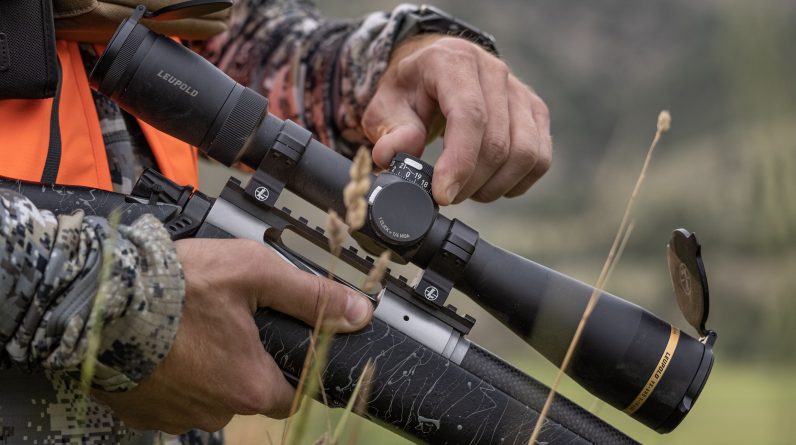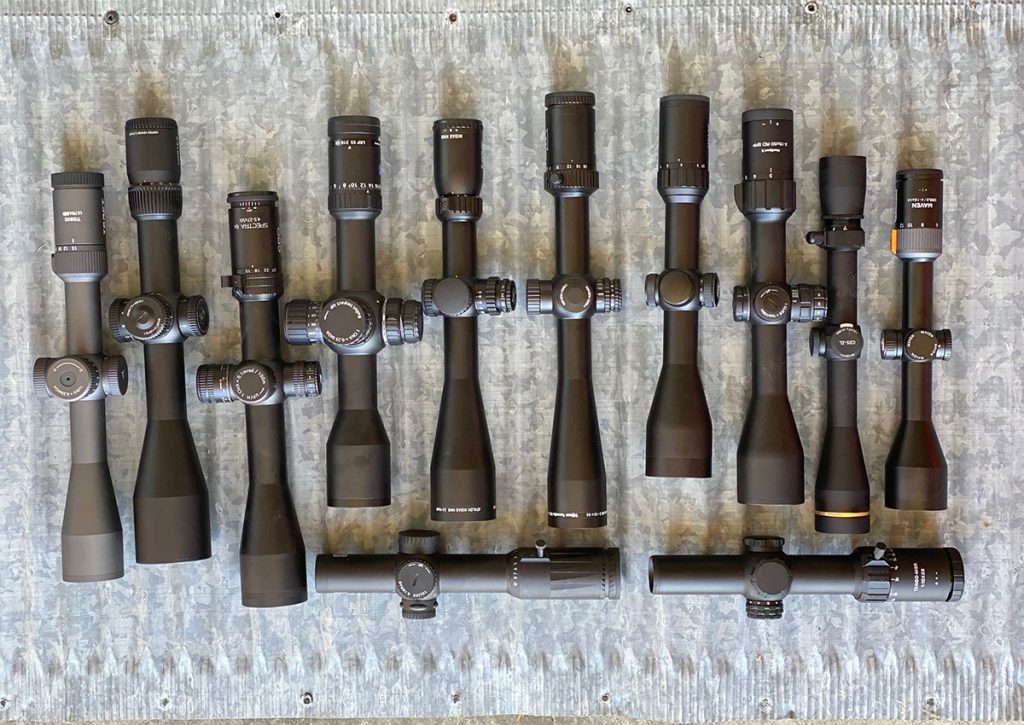
Hey there! Are you curious about how to find the perfect rifle scope for your needs? Choosing the right scope can make a big difference in your shooting accuracy and overall hunting experience. But with so many options out there, it can be a bit overwhelming to know where to start. Don’t worry, I’ve got your back! In this article, we’ll explore some helpful tips and considerations to keep in mind when selecting a rifle scope. So, whether you’re an experienced hunter or just getting started, stay tuned to learn more about choosing the perfect rifle scope for you!
Have you ever wondered what factors to consider while selecting a rifle scope? Well, you’re in luck! In the following paragraphs, we’ll break down the key elements to help you make an informed decision. From understanding different types of reticles to determining the ideal magnification range for your shooting needs, we’ve got plenty of insights to share. So, if you’re ready to take your shooting skills to the next level and make your hunting adventures more enjoyable, keep reading! We’ll guide you through the process of selecting the perfect rifle scope that suits your specific requirements.

This image is property of www.fieldandstream.com.
Factors to Consider
Choosing the perfect rifle scope can be a daunting task, considering the wide range of options available in the market. Factors such as purpose of use, magnification power, objective lens size, reticle type, and adjustment controls play a crucial role in determining the right scope for your needs. By understanding and considering these factors, you can make an informed decision and find the perfect rifle scope that meets your requirements.
Understanding the Purpose
The first factor to consider when choosing a rifle scope is the purpose of use. Are you planning to use it for hunting, long-range shooting, or tactical applications? Each purpose requires different features and specifications.
Hunting
If your primary purpose is hunting, you need a scope that offers quick target acquisition, a wide field of view, and excellent low light performance. Look for scopes with a duplex reticle, which consists of a thin crosshair with thicker outer lines. This reticle type allows for fast target acquisition and is ideal for various hunting scenarios.
Long-Range Shooting
For long-range shooting, you need a scope that offers high magnification power and precise adjustments. Variable magnification scopes are ideal for long-range shooting as they provide flexibility to adjust to different distances. Look for scopes with a mil-dot or BDC reticle, which helps compensate for bullet drop at longer distances.
Tactical Applications
When it comes to tactical applications, durability, and reliability are crucial factors to consider. Look for scopes that are shockproof, waterproof, and fog-proof. Consider scopes with illuminated reticles, which allow for better visibility in low light conditions. Additionally, opt for scopes with precise adjustment controls to quickly adapt to changing situations.

This image is property of zerotechoptics.com.
Choosing the Magnification Power
The next factor to consider is the magnification power. The magnification power determines how close you can view your target. There are two types of magnification: fixed and variable.
Fixed Magnification
Fixed magnification scopes have a constant magnification power, such as 4x or 6x. These scopes are ideal for specific shooting scenarios where a consistent magnification level is required. They are often more affordable and easier to use since there are no adjustments needed.
Variable Magnification
Variable magnification scopes allow you to adjust the level of magnification according to your needs. They have a range of magnification power, such as 3-9x or 4-12x. These scopes offer more versatility, allowing you to adapt to different shooting distances and scenarios. However, variable scopes are often bulkier and more expensive compared to fixed magnification scopes.
Optimal Objective Lens Size
The objective lens size refers to the diameter of the front lens on the scope. It plays a significant role in determining the amount of light that can enter the scope, thus affecting the image brightness.
Low Light Performance
If you plan to hunt during dawn or dusk when light conditions are low, consider a scope with a larger objective lens size. A larger objective lens gathers more light, resulting in better image brightness and clarity. However, larger objective lens sizes can also make the scope bulkier and heavier.
Weight and Size Considerations
If weight and size are essential considerations for you, opt for scopes with smaller objective lens sizes. These scopes are lightweight and more compact, making them ideal for backpacking or hunting in tight spaces. Keep in mind that smaller objective lens sizes may result in reduced image brightness in low light conditions.

This image is property of www.targettamers.com.
Exploring Reticle Types
The reticle, also known as the crosshair, helps you aim at your target. There are different types of reticles available, each with its unique features and benefits.
Duplex Reticle
The duplex reticle is the most commonly used reticle and features a thin crosshair with thicker outer lines. This reticle type allows for quick target acquisition and is ideal for hunting scenarios where speed is crucial. The thick outer lines help in low light conditions by contrasting against the target.
Mil-Dot Reticle
The mil-dot reticle is popular for long-range shooting applications. It features small dots along the reticle’s vertical and horizontal lines, known as mil dots. These dots can be used for bullet drop compensation, range estimation, and windage adjustments. Mil-dot reticles provide precise aiming at longer distances.
BDC Reticle
The bullet drop compensating (BDC) reticle is specifically designed to compensate for bullet drop at different distances. It features additional aiming points or hash marks below the center crosshair, each corresponding to a specific distance. BDC reticles are commonly used in hunting and long-range shooting scopes.
Illuminated Reticle
Illuminated reticles are ideal for low light conditions. These reticles have built-in illumination, which helps improve visibility in dark environments. Some illuminated reticles offer adjustable brightness levels to suit different lighting conditions.
Considering Adjustment Controls
Adjustment controls play a crucial role in fine-tuning your shot and compensating for various external factors such as wind and elevation.
Windage and Elevation Adjustments
Windage and elevation adjustments allow you to correct your aim without physically adjusting the rifle. Look for scopes with precise and easy-to-use windage and elevation adjustment controls. Some scopes feature finger-adjustable turrets, while others use dials to make adjustments.
Turrets vs Dials
Turrets are external knobs that can be adjusted manually to make windage and elevation adjustments. They typically have audible clicks and sometimes offer a zero-reset function for quick reference. On the other hand, dials are internal adjustment mechanisms that are typically adjusted using a tool. Dials provide more precise adjustments but may require more effort to access and adjust.
Click Value
Click value refers to the amount of adjustment that each click on the turret or dial represents. It is measured in minutes of angle (MOA) or milliradians (mil). A smaller click value offers more precise adjustments but may require more clicks to cover a large adjustment range.

This image is property of www.leupold.com.
Accounting for Eye Relief
Eye relief is the distance between your eye and the scope’s eyepiece when the scope is properly mounted on your rifle. It is an essential factor to consider to avoid eye strain and ensure a comfortable shooting experience.
Avoiding Eye Strain
Opt for scopes with generous eye relief to prevent eye strain and discomfort during extended shooting sessions. Eye relief is especially crucial for high recoil firearms, as it prevents the scope from hitting your face.
Eye Relief Measurements
Eye relief measurements are usually provided in millimeters, indicating the maximum distance your eye can be from the scope’s eyepiece while maintaining a full field of view. A range of 3-4 inches is considered comfortable for most shooting scenarios.
Determining the Tube Size
The tube size refers to the diameter of the main body of the scope. It determines the compatibility of the scope with mounting rings and can affect the overall performance and durability.
Choosing between 1-inch and 30mm Tubes
The most common tube sizes for rifle scopes are 1 inch and 30mm. Both sizes offer a wide range of scope options, but 30mm tubes are generally preferred for long-range shooting due to their ability to provide more adjustment range. 1-inch tubes are more commonly found, and the mounting rings for these are generally more affordable and readily available.
Tube Material and Durability
Consider the material and construction of the tube for durability and resistance to recoil. Aluminum tubes are commonly used due to their lightweight and durability. Some higher-end scopes may feature tubes made from aircraft-grade aluminum for added strength and ruggedness.

This image is property of www.outdoorlife.com.
Evaluating Coating and Prisms
Lens coatings and prism types are essential considerations as they affect image clarity, brightness, and color accuracy.
Lens Coating
Lens coatings reduce light reflection and glare, improving image quality and brightness. Look for scopes with fully multi-coated lenses, as they offer the highest light transmission and clarity. Additionally, consider scopes with coatings that provide scratch resistance and repel water, oil, and dust.
Prism Types
Prism types are more relevant to tactical scopes that utilize prism technology for compactness. Most rifle scopes use either roof prisms or porro prisms. Roof prisms offer compact design and superior durability, while porro prisms provide better depth perception and field of view.
Conclusion
Choosing the perfect rifle scope requires careful consideration of factors such as purpose of use, magnification power, objective lens size, reticle type, adjustment controls, eye relief, tube size, coating, and prism types. By understanding these factors and how they relate to your specific needs and requirements, you can make an informed decision and find the perfect rifle scope that enhances your shooting experience and improves accuracy. Remember to prioritize durability, reliability, and optical performance when selecting a rifle scope, and always consider factors such as weight, size, and budget to find the perfect balance between functionality and convenience.

